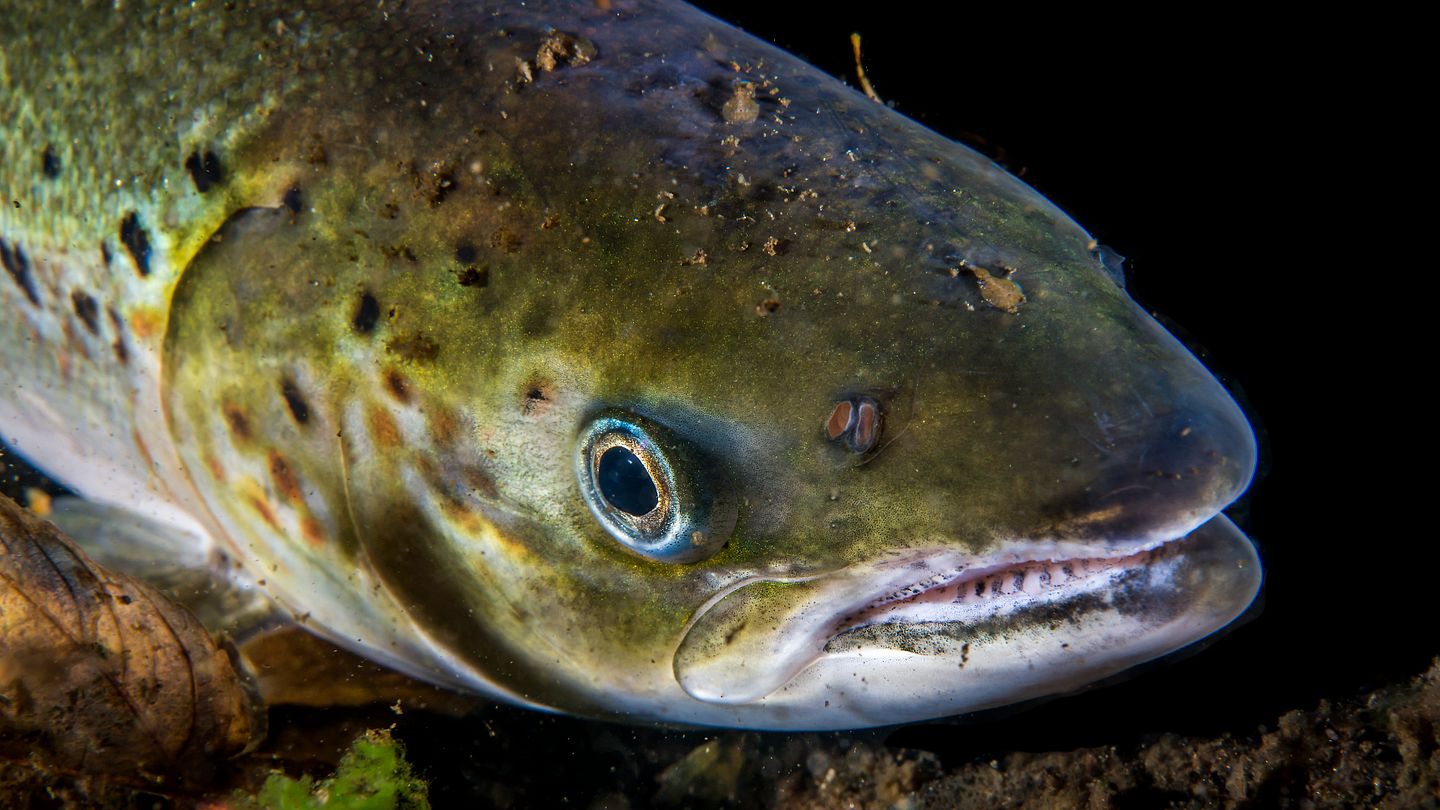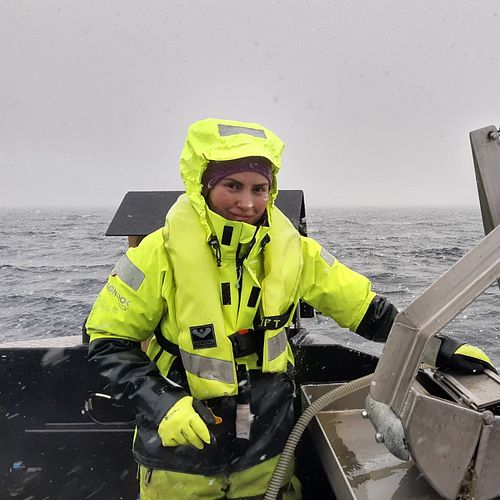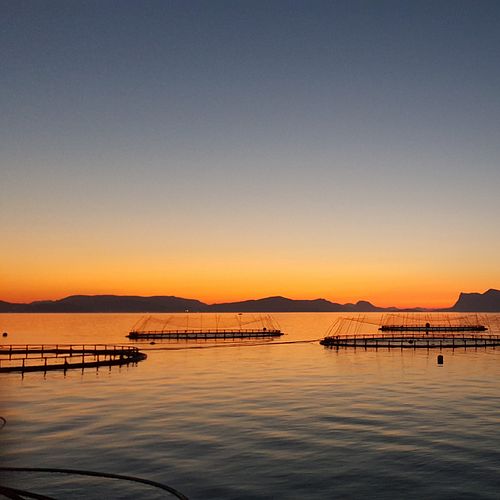23 April 2024 news
By Kjetil Sagerup, Gro Harlaug Refseth, Magnus Drivdal, Eli Børve, Maj Arnberg, Pierre Blévin and Trude Borch (Akvaplan-niva) & Pernilla Carlsson, Ian John Allan, Roger Raanti,Samantha Eslava Martins, Ailbhe Lisette Macken and Adam Lillicrap (NIVA)
Due to numerous challenges associated with salmon lice, the aquaculture industry is constantly looking for improved methods for lice removal. A research team from Akvaplan-niva and NIVA investigating the environmental risks associated with an innovative method: delousing medication in floating feed.
Salmon lice are considered as one of the biggest challenges for the aquaculture industry in Norway and other salmon farming-countries. Beyond increasing the risks that lice spread to native species and the animal welfare aspect of infestation, louse-infested salmon impose an economic burden on aquaculture companies due to costs related to delousing. Both medicinal and non-medicinal methods are used to fight salmon lice, but they all have drawbacks related to environmental impacts and fish welfare and health.
The pesticide emamectin benzoate (EMB) is an active ingredient in the in-feed medication with the commercial names Aquavet SLICE® and Slice Vet®. EMB has been used to treat salmon in Norway for more than two decades. It is usually administered via pellets fed to the fish in open net pens in the ocean. If not consumed by the fish, the leftover medicated pellets containing EMB sink and end up on the sea floor. EMB will also enter marine sediments via fish faeces and urine. It takes months or even years for EMB to be degraded in marine sediments. To minimise the associated environmental risks and avoid collateral effects on untargeted marine species (eg, organisms living on the sea floor around the fish farms), the aquaculture industry needs to ensure responsible use of this delousing chemical. While Norway is still lacking environmental threshold values for EMB, other fish-producing countries such as Scotland have established stricter regulations (see https://www.sepa.org.uk/).
A while ago, a new idea for a delousing regime came up: the use of EMB in-feed pellets with positive buoyancy. Unlike the sinking pellets, the floating feed will remain at the sea surface. If too many pellets are observed on the surface, this is a strong indication to limit feeding and collect remaining pellets. Therefore, this new method may reduce environmental impacts.
How we studied this
The project POSITIV OPPDRIFT combined field investigations and oceanographic modelling to investigate whether floating in-feed pellets entailed environmental risks compared with traditional sinking feed method. Large-scale field feeding treatment trials were carried out at two aquaculture sites in northern Norway. In the trials, fish were treated for a 10-day period with either sinking or floating feed containing EMB. Simultaneously, field studies were carried out to measure the environmental concentrations of the delousing agent in water and sediment samples around the aquaculture sites. These field studies were done before, during, and again after the feeding experiment. In parallel, oceanographic modelling was performed to simulate the spread of the delousing agent around the sites after treatment with the two different feed allocation methods.
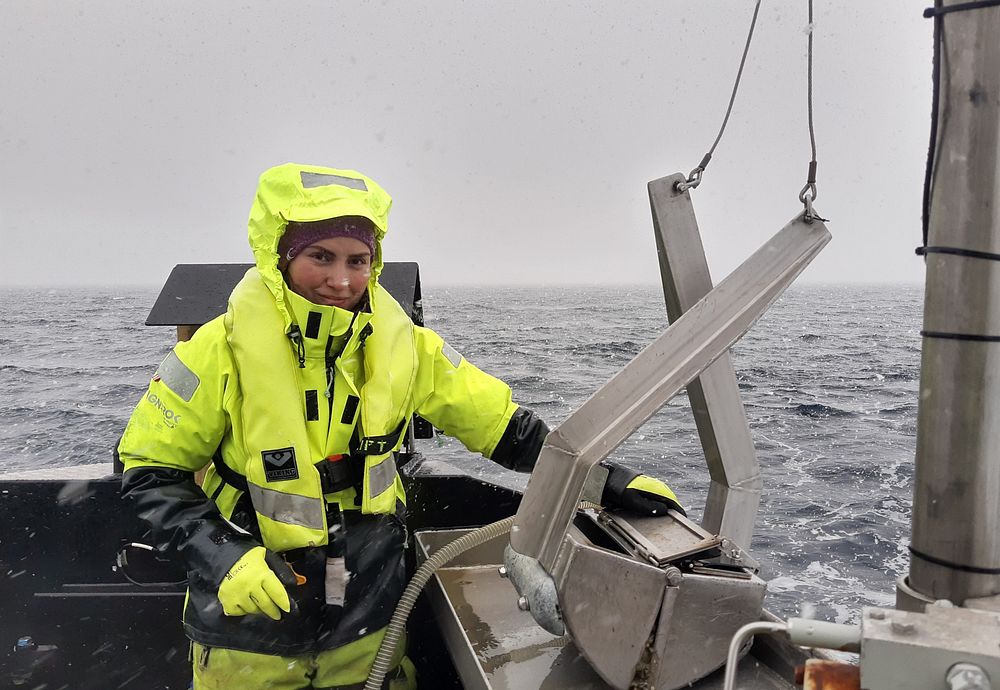
Collection of sediment samples close to a fish farm. Photo: Carl Ballantine / Akvaplan-niva
What we learned
We found EMB in the environment around the fish farms after both feed allocation methods. This was not surprising given the high persistence of EMB in the environment. The concentration of EMB in all sediment samples was above the Scottish threshold values.
The oceanographic dispersion modelling showed that the EMB in the water column dissipated quickly. Most of the EMB reaching the sediment remained localised within 150 m around the farm. In the model, it was assumed that 2% of the feed would not be eaten, which resulted in a 4-7% reduction in maximum modelled concentrations of EMB in sediment when floating feed pellets were used.
However, the field investigation showed that EMB concentrations in sediment samples taken 500 m from the farm were relatively high, close to or above the threshold levels for environmental impacts set by the Scottish Environment Protection Agency.
Moreover, we found much lower concentrations of EMB in sediment samples taken in the vicinity of the cages with floating pellets compared to sinking pellets (up to 50% lower). Similarly, the amount of EMB was slightly lower in samples from waters where floating feed had been used. These encouraging results suggest that this innovative pesticide administration method with floating feed can reduce environmental risk from delousing processes. It must be emphasised that these results are based on one test only, and the field trials should be replicated.
Although the method looks promising, additional risk-reducing measures should be implemented, as EMB concentrations were still above the Scottish EPA threshold values for environmental impacts.
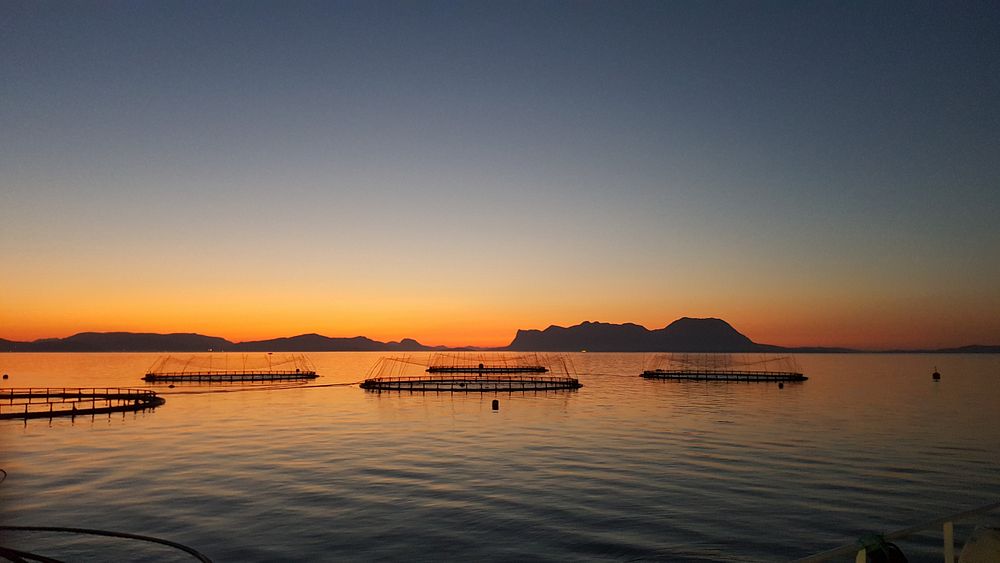
Aquaculture facilities in northern Norway. Photo: Vegar Johnsen / Akvaplan-niva.
About the project:
The project "Miljørisikovurdering av ny metode for administrasjon av fôrlegemidler mot lakselus" (Positiv oppdrift) was financed by FHF – Norwegian Seafood Research Fund. The project was led by Akvaplan-niva and carried out in collaboration with the Norwegian Institute for Water Research (NIVA), Skretting, and Salmo Pharma AS.
This text has previously been published in Fram Forum: https://framforum.com/2024/03/...
